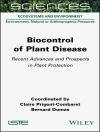The bioactive compounds of plants have world-wide applications in pharmaceutical, nutraceutical and food industry with a huge market. In this book, a group of active researchers have addressed on the most recent advances in plant cell and organ cultures for the production of biomass and bioactive compounds using bioreactors.
Tremendous efforts have been made to commercialize the production of plant metabolites by employing plant cell and organ cultures in bioreactors. This book emphasizes on the fundamental topics like designing of bioreactors for plant cell and organ cultures, various types of bioreactors including stirred tank, airlift, photo-bioreactor, disposable bioreactor used for plant cell and organ cultures and the advantages and disadvantages of bioreactor cultures. Various strategies for biomass production and metabolite accumulation have been discussed in different plant systems including Korean/Chinese ginseng, Siberian ginseng, Indian ginseng, Echinacea, St. John’s wort, Noni, Chinese licorice, Caterpillar fungus and microalgae. Researches on the industrial application of plant cells and organs with future prospects as well as the biosafety of biomass produced in bioreactors are also described.
The topics covered in this book, such as plant cell and organ cultures, hairy roots, bioreactors, bioprocess techniques, will be a valuable reference for plant biotechnologists, plant biologists, pharmacologists, pharmacists, food technologists, nutritionists, research investigators of healthcare industry, academia, faculty and students of biology and biomedical sciences. The multiple examples of large-scale applications of cell and organ cultures will be useful and significant to industrial transformation and real commercialization.
Table des matières
Part I Bioreactor design, advantages and limitations of bioreactor cultures.-1 Design of bioreactors for plant cell and organ cultures.-2 Disposable bioreactors for cultivation of plant cell cultures.-3 Plant derived bioactive molecules: Culture vessels to bioreactors.- Part II Production of biomass and bioactive compounds from cell suspension cultures.-4 Production of carotenoids using microalgae cultivated in photobioreactors.-5 Submerged fermentation of medicinal fungus Cordyceps sinensis for production of biologically active mycelial biomass and exopolysaccharides.- 6 Ginseng cell culture for production of ginsenosides.-7 Production of biomass and bioactive compounds from cell suspension cultures of Panax quinquefolium L. and Glycyrrhiza uralensis Fisch.-Part III Production of biomass and bioactive compounds from organ cultures – shoot, embryo and adventitious root cultures.-8 Production of caffeic acid derivatives from adventitious root cultures of Echinacea purpurea (L.) Moench.-9 Adventitious root culture of Morinda citrifolia in bioreactors for production of bioactive compounds.-10 Production of biomass and bioactive compounds in adventitious root cultures of Eleutherococcus koreanum Nakai.-11 Production of adventitious root biomass and bioactive compounds from Hypericum perforatum L. through large scale bioreactor cultures.-12 Production of withanolides from cell and organ cultures of Withania somnifera (L.) Dunal.-13 Production of bioactive compounds of Siberian ginseng from somatic embryo suspension cultures in bioreactors.-14 Bioreactor culture of shoots and somatic embryos of medicinal plants for production of bioactive compounds.-15 Hairy roots: Production of metabolites to environmental restoration.-16 Mass production of Lilium bulbelets in bioreactors.-17 In vitro production of Digitalis purpurea biomass using temporary immersion cultures.-18 Role of nitric oxidein adventitious roots development.-19 Melatonin-rich plants: Production, significance in agriculture and human health.-Part IV Strategies for production of bioactive compounds, large-scale cultures and metabolic engineering of selected metabolites.-20 Strategies for enhanced production of plant secondary metabolites from cell and organ cultures.-21 Metabolic engineering of selected secondary metabolites.-22 Theoretical basis of plant cell and tissue culture for production of biomass and bioactive compounds.-23 Isoprenoid production via plant cell cultures: biosynthesis, accumulation and scaling-up to bioreactors.-24 Production of ginsenosides from adventitious root cultures of Panax ginseng.-Part V Bio-safety assessments of plant cell and organ culture products.-25 Food ingredients from plant cell, tissue and organ cultures: biosafety and efficacy evaluations.-Part VI Physiological disorders in plants cultured in bioreactors.-26 Biochemical and physiological aspects of hyperhydricity in liquid culture system
A propos de l’auteur
Kee-Yoeup Paek, Research Center for the Development of Advanced Horticultural Technology, Chungbuk National University, Cheongju 361-763, Republic of Korea.
Hosakatte Niranjana Murthy, Department of Botany, Karnatak University, Dharwad 580003, India.
Jian-Jiang Zhong, State Key Laboratory of Microbial Metabolism, School of Life Sciences and Biotechnology, Shanghai Jiao Tong University, 800 Dong-Chuan Road, Shanghai 200240, China.












